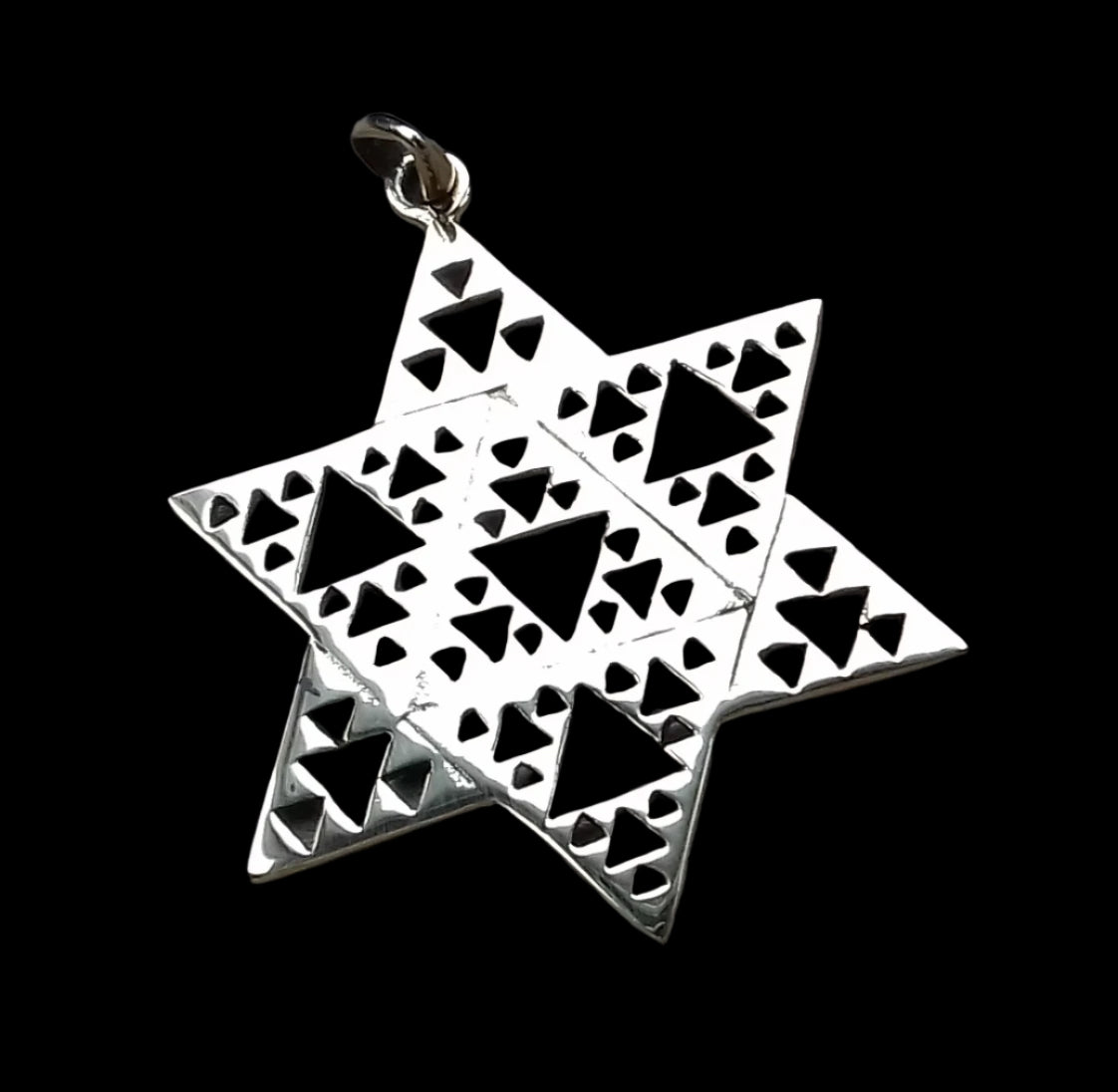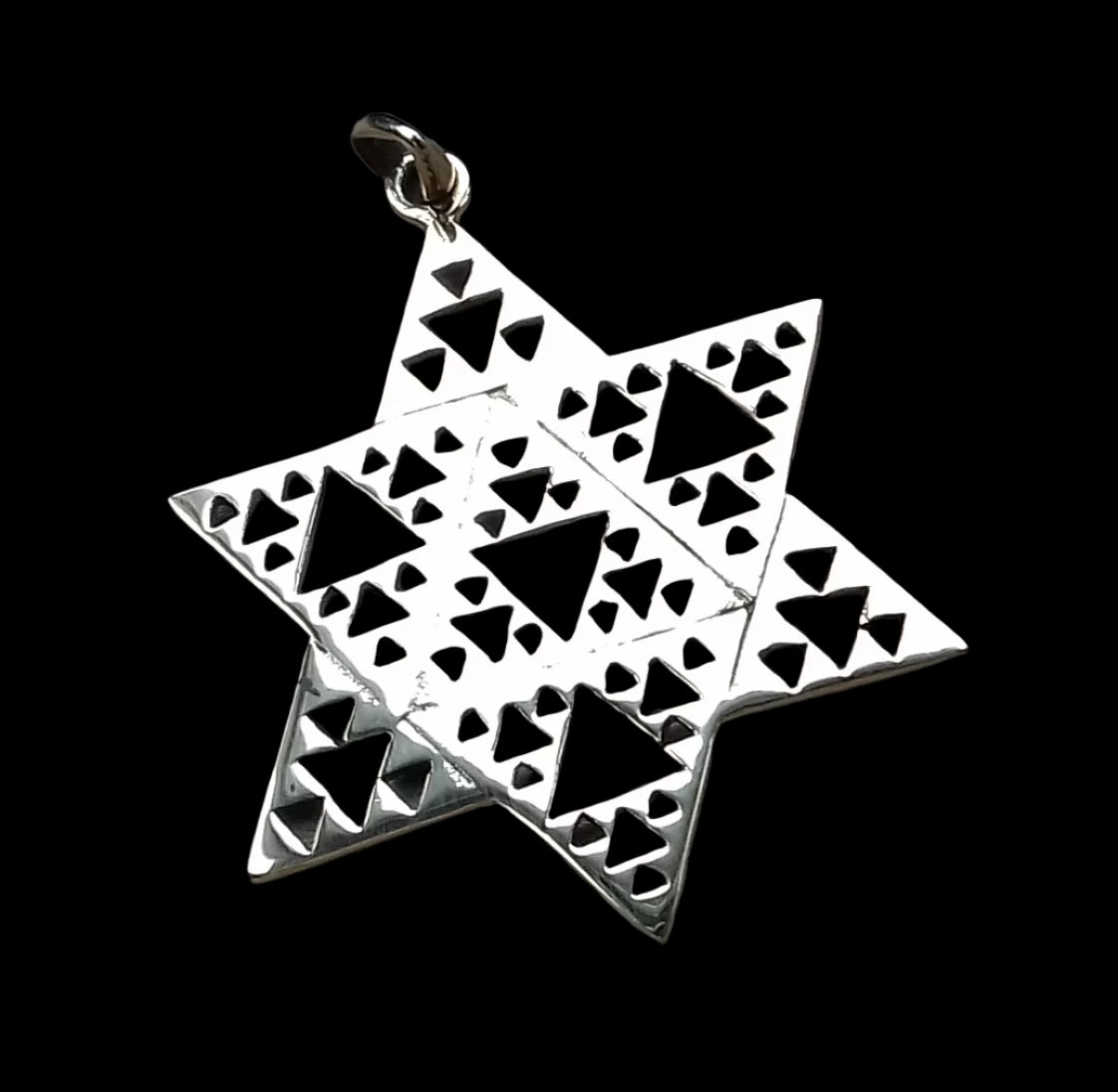Portal Glastonbury
Ref.SM0071 - Sierpinski triangle
Ref.SM0071 - Sierpinski triangle
Couldn't load pickup availability
Ref.SM0071 - Sierpinski triangle
The symbolic significance of the Sierpinski triangle, a fractal and self-similar geometric pattern, lies in its mathematical elegance and its ability to evoke profound metaphysical and philosophical ideas. Named after Polish mathematician Wacław Sierpiński, who described it in 1915, this shape—formed by recursively removing smaller triangles from an equilateral triangle—carries layered meanings that resonate across science, spirituality, and human thought.
At its core, the Sierpinski triangle symbolizes infinity and the concept of the infinite within the finite. Its structure reveals an endless process: no matter how deeply you zoom in, the pattern of triangles within triangles repeats indefinitely, suggesting boundless complexity contained within a simple, bounded form. This mirrors ideas of the universe as both vast and intricate, where the macrocosm (the whole triangle) reflects the microcosm (its smaller parts), a concept central to mystical traditions like Hermeticism or Eastern philosophies.
The fractal nature of the Sierpinski triangle also represents unity and interconnectedness. Each smaller triangle is a scaled-down version of the whole, implying that every part is linked to the greater structure. This resonates with spiritual notions of oneness—individual elements reflecting the universal whole, as seen in ideas like the interconnected web of life where each node mirrors the entire cosmos.
Another layer of symbolism is complexity emerging from simplicity. The Sierpinski triangle starts with a basic rule—divide and remove—and from this minimal process arises an intricate, almost paradoxical form with infinite detail and a fractional dimension (approximately 1.585). This evokes the idea that profound outcomes can stem from simple beginnings, paralleling creation myths or the notion that the universe unfolded from a singular point, like the Big Bang.
The triangle’s self-similarity also suggests cycles and continuity. It symbolizes resilience and permanence through repetition, as the pattern persists regardless of scale. In a spiritual sense, this can reflect the eternal nature of existence, where change and transformation follow consistent principles, akin to the cycles of life, death, and rebirth.
In esoteric contexts, the Sierpinski triangle aligns with sacred geometry, where shapes encode universal truths. Its triangular base connects to the symbolism of the triangle itself—stability, balance, and the trinity (e.g., mind, body, spirit). The recursive voids within it might symbolize the interplay of presence and absence, matter and emptiness, echoing philosophical ideas about reality’s dual nature or the void as a source of creation.
Psychologically, the Sierpinski triangle can represent the layers of the self. Its infinite regress invites introspection, suggesting that exploring one’s identity reveals deeper, repeating patterns—habits, beliefs, or truths—that mirror the larger whole of one’s being. It’s a call to look within, embracing both complexity and coherence.
In modern contexts, the Sierpinski triangle also symbolizes the beauty of chaos and order coexisting. As a fractal, it bridges deterministic rules (the recursive process) with unpredictable intricacy, reflecting how life balances structure and freedom. This makes it a potent emblem for creativity, adaptability, and the harmony of opposites.
Ultimately, the Sierpinski triangle’s symbolic significance lies in its ability to evoke wonder at the infinite, the interconnected, and the elegantly complex. It stands as a visual metaphor for the universe’s depth, the unity of all things, and the profound patterns that underlie both nature and human consciousness.
Type: medallion
Material: brass
Size: 40mm/1.57in approx.


